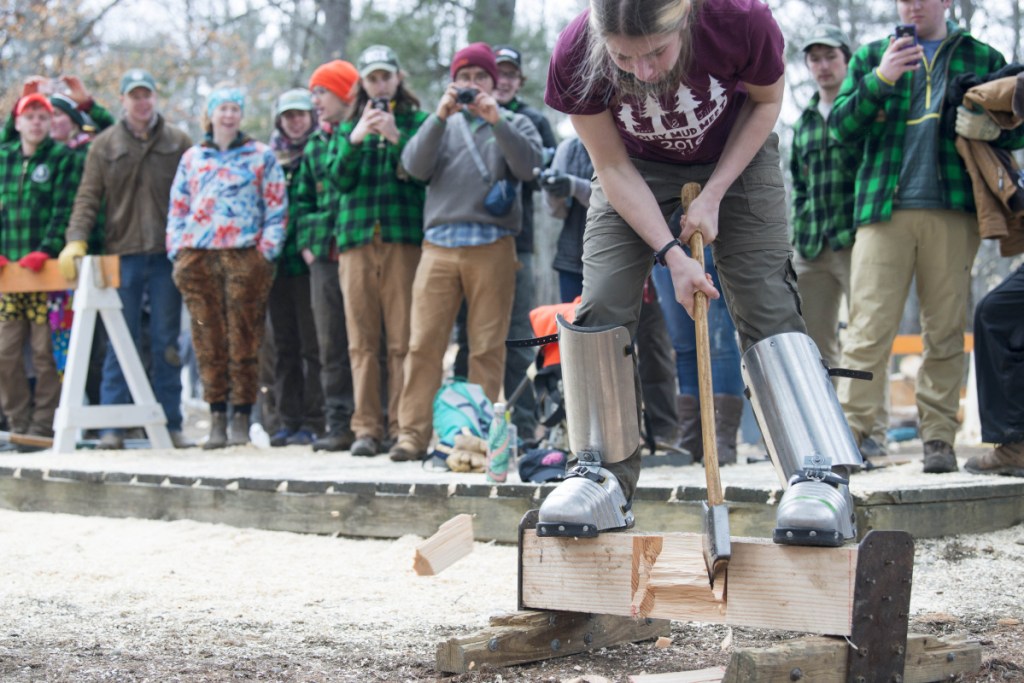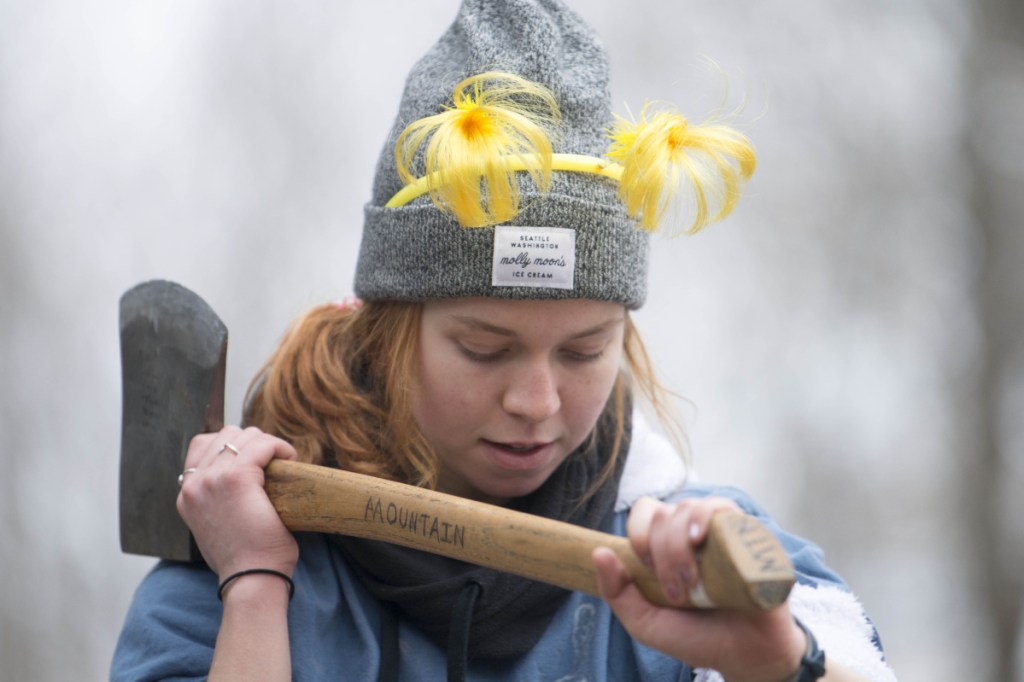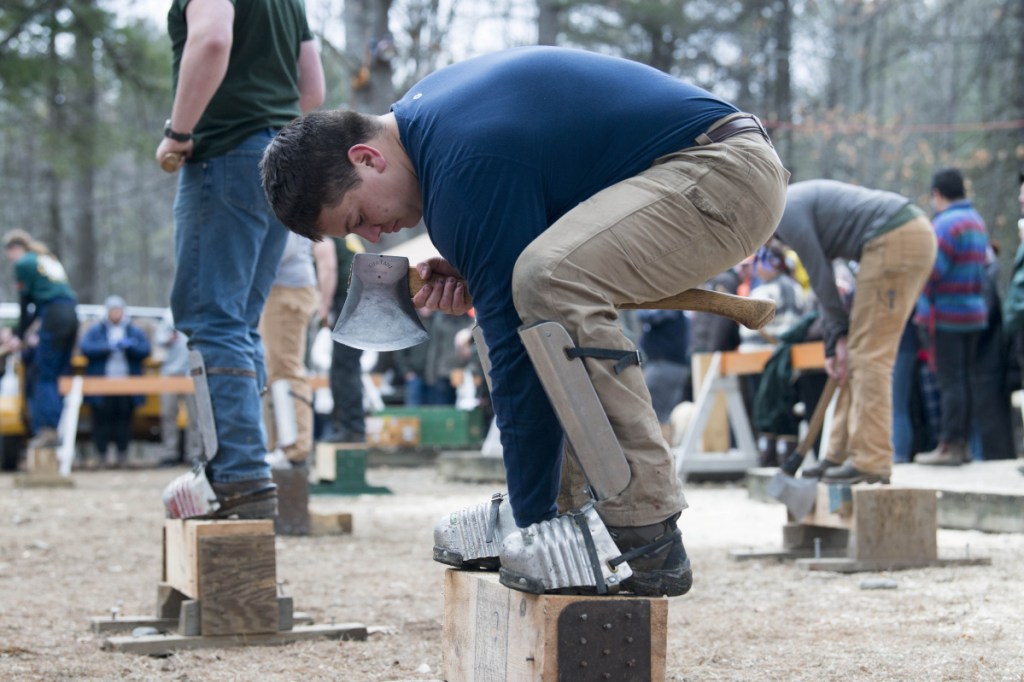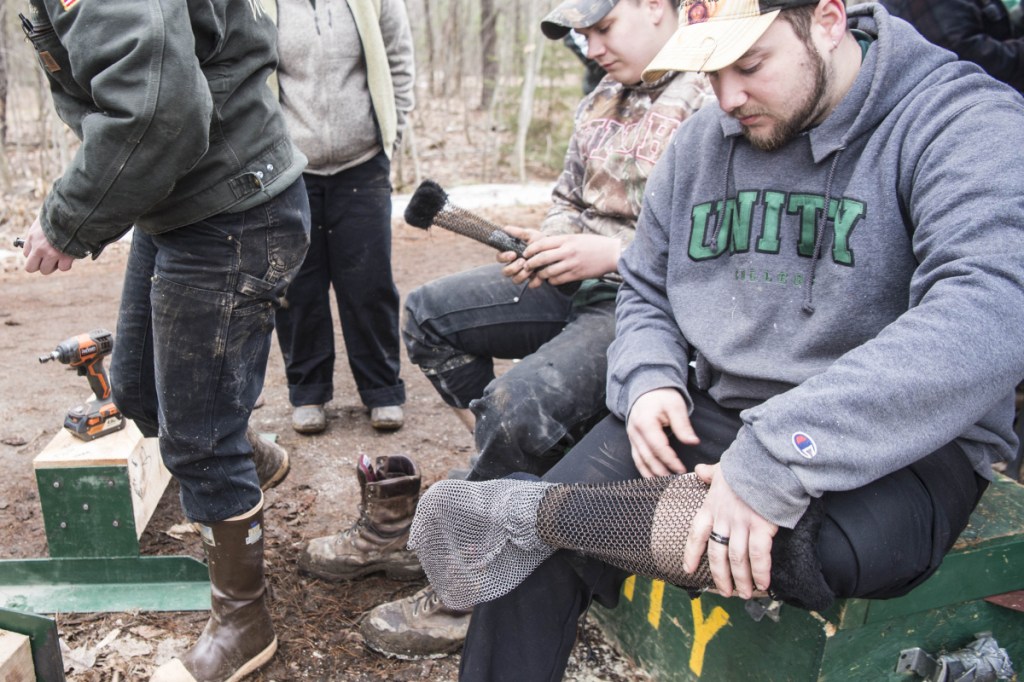WATERVILLE — A day after springlike temperatures blanketed the region, the ground at the Woodsmen field at Colby College was a slushy mix of mud and the few remnant snow piles Saturday. But despite the sloppy conditions, students from around New England gathered to practice the disappearing arts for which the field is named.
Dozens of students and spectators gathered for the annual Mud Meet woodsmen competition. With most participants and viewers decked out in flannel shirts, Carhart leggings and boots, the air around the event smelled of wood chips. Nearby, a sound system played country songs. In between events, the speakers blared about cold beer on Friday nights.
It’s been over 10 years since the first “Jack and Jill” coed woodsmen event Colby hosted. David Smith, the woodsmen team coach, said lumber sports first began at colleges in the 1940s, with the Northeast being the most active. Colby first fielded a woodsmen team in 1950 and has “been going strong ever since.” Wood sports are based on vocations from years ago, Smith said, and events like the Mud Meet were important because they kept the traditions of the woodsmen alive.
“Few people are still working with the tools,” he said.
The all-day competition features events for singles, doubles and teams, where competitors roll logs, use axes to chop through vertically and horizontally positioned chunks of wood, and use huge bucksaws on wooden beams. Smith said students from 10 colleges in the region participated, including the University of Connecticut, the University of Vermont, the University of Maine in Orono, Maine Maritime Academy, Dartmouth and Unity, as well as schools from New Brunswick.
“These are lost skills,” Smith said.
Smith said most colleges with woodsmen teams host their own respective events. Colby’s Mud Meet is the final event of the season.
In between events, Smith and others gave demonstrations. Surrounded by a group of 10 or so, he showed how to coil a surveyor’s chain. The 66-foot length of steel, which was wrapped into a figure-eight formation, was originally used as a unit measure, he said. A length with 80 chains is used to measure a mile. Despite some struggles, Smith said wrapping the coil was not as difficult as it looked, and the purpose of the demonstration was to showcase a person’s proficiency in wrapping it.
“It was used in forestry quit a bit,” Smith said.
Some events in the Mud Meet, such as the ax throwing and chainsaw events, are not based on the traditional activities of woodsmen from decades ago, but many events are. The coed teams participate in events like standing-block chop, log rolling, sawing and pole climbing.
During a timed event called the horizontal chop, teams of two raced to cut through two blocks of wood. Each member stood on their respective block, which is on a post – known as a stanchion – just above the ground. Decked out in metal leg protectors, each team whacks away at the log at a 45-degree angle, first on one side of the log, then switching over to the other. Once the first member is through their log, the next teammate takes on their log.
Christian Trejo of Dartmouth was one of the competitors at the horizontal chop. He said he and his partner, Lauren Mendolson, also participate in the crosscut event, in which they use a 5-foot, two-person saw to carve multiple pieces of wood off a log.
Timber sports, a growing competition for college students, consist of many timed events, though the Mud Meet had a laid-back feel about it. The Mud Meet has grown since it first came around in 2007, when it became a coed event. Teams are required to field teams of six equally divided between men and women at the Mud Meet.
“We’re keeping a tradition alive,” Smith said.
Send questions/comments to the editors.











Comments are no longer available on this story